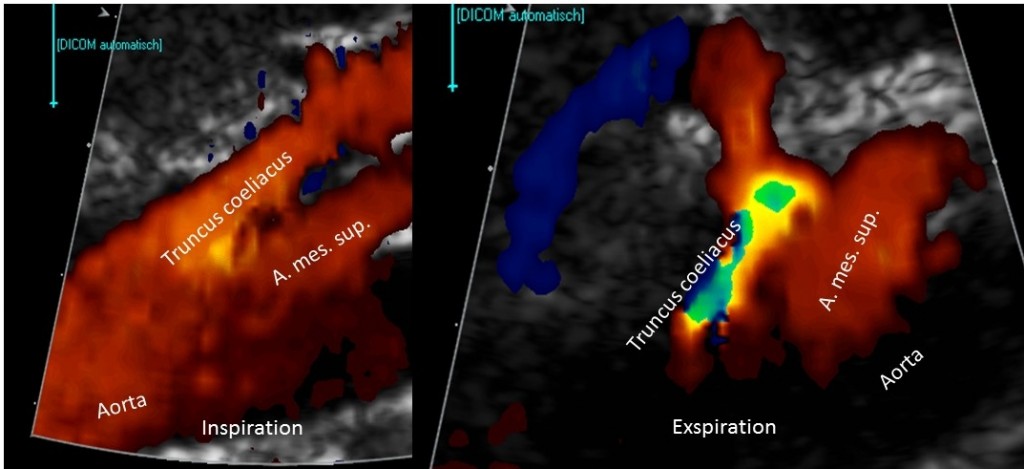
This vascular compression syndrome, concerning its frequency, is second only to the Nutcracker Phenomenon. In my practice I diagnosed and treated far more than 1000 patients with this disorder. The most frequent complaints in the compression of the celiac trunk and the adjacent celiac ganglion (a nervous plexus controlling vegetative functions in the upper abdomen) are abdominal pain, tachycardia (also manifesting as Postural Tachycardia Syndrome (PoTS)), heart pain (actually pain in the chest), restrained inspiration, nausea, vertigo, fainting, collapse and diarrhea after a meal as well as reduced tolerance to physical activities.
This disease, also known as Dunbar syndrome, MALS (Median Arcuate Ligament Syndrome), celiac ganglion compression syndrome (probably the best characterization), celiac artery compression syndrome is difficult to demonstrate with the conventional diagnostics and thus remains hidden and enigmatic.
Due to the great variety of symptoms and the often prevailing vegetative complaints the patients experience an odyssey through many medical disciplines, often without getting the correct explanation. Eventually, they are transferred to a psychologist or psychiatrist.
The functional color Doppler sonography can demonstrate the relevant structures easily and paved the way to a successful treatment, the laparoscopic decompression of the celiac ganglion. Typically, this results in immediate and lasting pain relief.

The symptoms in the celiac trunk compression syndrome arise due to the irritation of the celiac ganglion by the overriding diaphragm. Left: celiac trunk free and erect in deep inspiration. Right: Hook-like dislocation of the celiac trunk, flow acceleration (yellow hues) and narrowing
A more detailed desription of vascular compression syndromes can be downloaded here.
The video below demonstrates the change of compression of the celiac trunk in different postions of the diaphragm:
